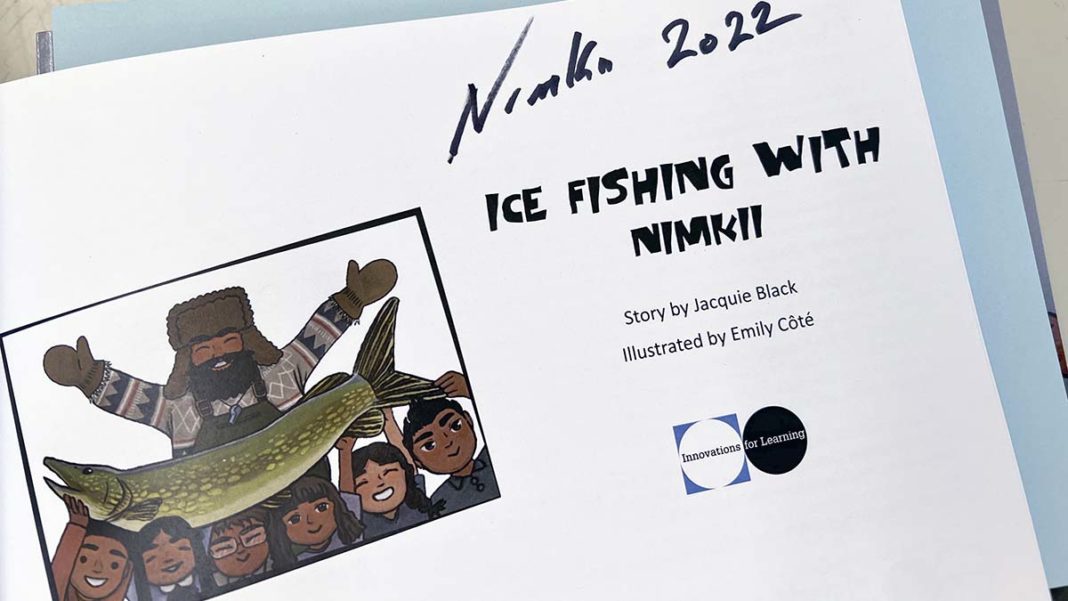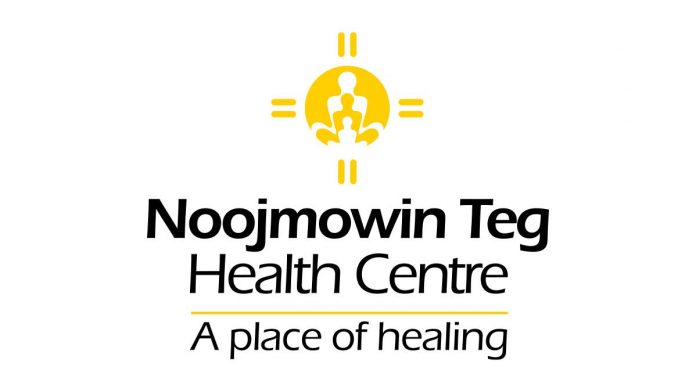WIIKWEMKOONG—Early reading is proven to be vital to later educational attainment and students at Wiikwemkoong Junior School have been engaged in a program aimed at promoting early literacy over the past few months in partnership with Innovations for Learning, an organization aimed at improving literacy among youth.
The students interacted with two different human resources during the program, explained Innovations for Learning’s Deanne Kondrat. The first is with an early literacy interventionist (ELI), that is a paid professional (like Jacob Pitawanakwat, who you see hosts the event at the Junior School and can be seen in a Livestream of the event at bit.ly/wbe-eli). ELIs are recruited from the community and work with students in person every day at the school. The ELIs can be seen in conference in the classroom and at home with families through smartphones during the video.
The second resource is virtual volunteer reading coaches, employees from companies that sponsor the initiative, who call into the classroom for 30 minutes once per week at a dedicated reading station that Innovations for Learning installs in the participating classrooms. The volunteers utilize a custom web application Innovations for Learning developed called TutorMate.
Gathered in a semi-circle in front of a big screen monitor and interacting through the use of a laptop, the students participating in the program met as a group and individually with their volunteer mentors in an event that took place before the launch of a book, ‘Fishing with Nimkii,’ the students themselves had a hand in writing.
Nimkii Lavell, the “Nimkii” title character of the book, was on hand for the special noon book launch at the school and took part in reading the book to the students.
“I am excited about it,” laughed Mr. Lavell when asked how he felt about his new-found fame in print. “I think it represents an opportunity to be involved in a community literacy project with our young people,” he said. “Especially in a way that reflects their community.”
Mr. Lavell noted that the character he has created as a teaching tool for engaging youth with the land and their traditions doesn’t stray far from his own personality. “It’s the way I have been doing my own teaching in working with students,” he said.
Mr. Lavell said that he was pleased that the literacy program also deals with “the diversity of our people. Some Anishinaabe look like Nimkii, some might look like what they see on television. It helps portray our people in a real way.” Eschewing stereotypes, the students get to engage with images that reflect their own community.
“It is important that youth realize that we can follow our traditions and bring them into the modern world,” said Mr. Lavell. “For instance, my ancestors didn’t cut a hole in the ice with a gas auger, but I can. We are capable of moving our traditions from the past to the present day. You can use the best of what is available, but we can still follow our traditions and heritage. This is a little story that does that nicely.”
Mr. Lavell noted that “a big miigwetch needs to go out to all the people in the community that have shared their knowledge with me and have been there as a resource for me to be able to share that knowledge, especially the Trudeau and Cooper families—oh, and a little shout out to the magic man, Stitch (Manitowabi). He has been doing this for a lot longer than I have.”
Mr. Lavell shared that it looks like there are plans to create an entire series of books like ‘Fishing with Nimkii.’ Maybe the Magic Man will soon have his own place in print.
Innovations for Learning began over 25 years ago in the US, but has since expanded to several countries, including Canada. The organization pairs employees within corporations with young learners who are at risk of having below-average literacy skills.
As reported earlier last year by The Expositor’s Warren Schlote, studies have linked lower incomes to poorer literacy and future disadvantages. Median income in many First Nations is far lower than surrounding areas, such as 2016 census data which shows median income in Wiikwemkoong is roughly $8,000 to $10,000 lower than Manitoulin District, a pattern repeated at other First Nation communities.





